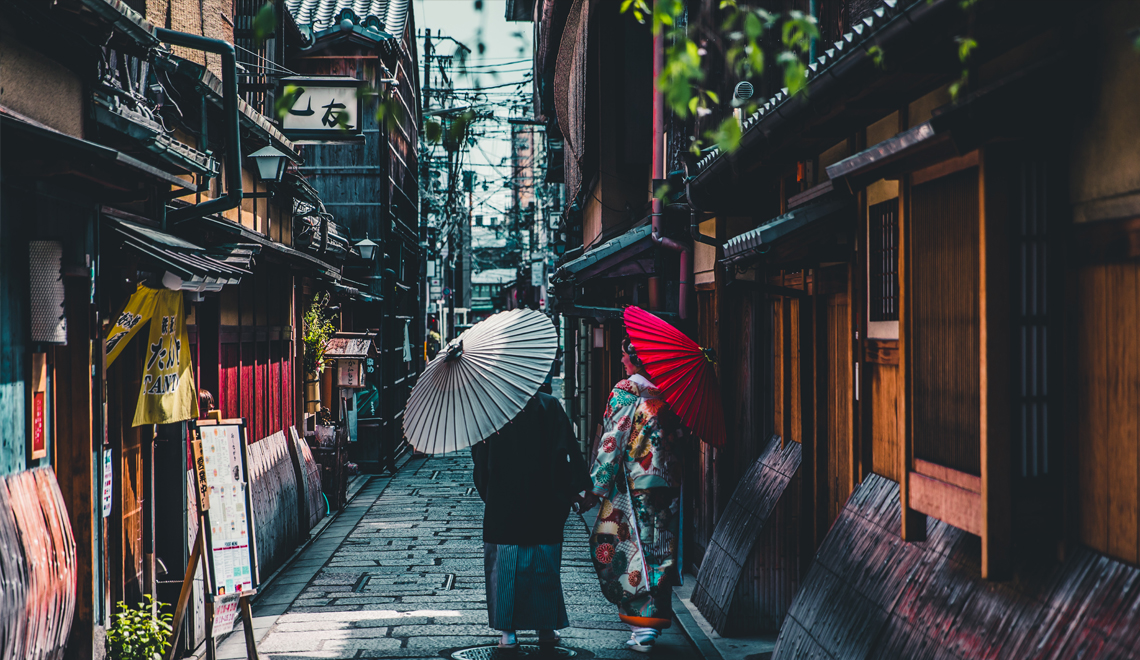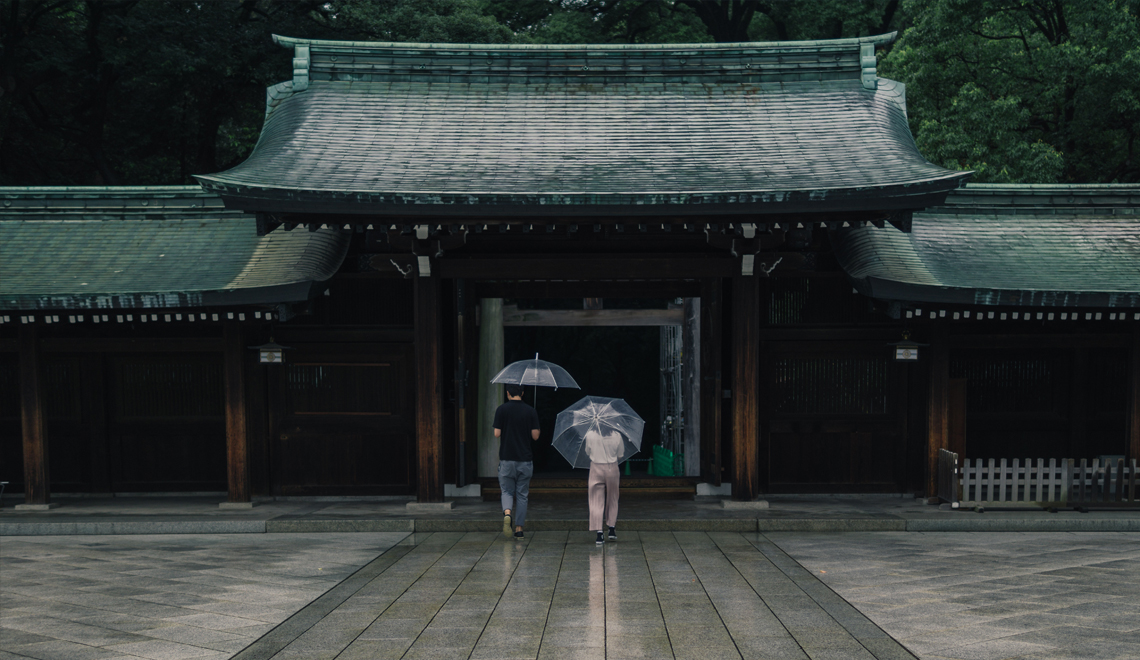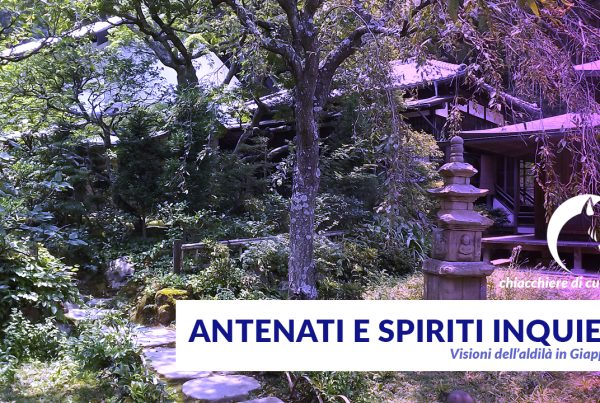We are back to something very dear to my study, religions and shamanism in Japan. Shamanism in contemporary Japan is a topic of interesting researches expecially among anthropologists and sociologists, and it is now widely connected to the developments of the so-called New Religions Movements, and the figures of the kyōso 教祖, their female charismatic founders
New VS. Established religions
Charismatic founders and strong hierarchy
New Religions display several difference with the established religions (kisei shūkyō 既成宗教). First of all, they are based on revelations experienced by a charismatic founder or foundress who offers not only solutions to everyday problems, but salvation for all mankind; specifically the founders are mainly women.
After a period of physical or mental illness they experience divine calling (often a dream or a vision) which attributes them the authority and charisma necessary to be recognized as a religious leader. While in their doctrine is identifiable a strong syncretic element, their charisma and their messages transcend traditional religious roles and allow them to create new religious organizations.
READ MORE: Religion in Japan: a brief intro
A New Religion usually develops from an informal group of people that gathers around the leader, now the founder. The last phase of the creation of a New Religion corresponds to the moment in which the founder is still alive but the structure is establishing a more solid and stable order, and it is often the most vibrant and creative moment of the Movement. The founder’s writings are usually regarderd as sacred, and they are often interpreted as the voice of the gods that spoke through the founder’s mouth, equating him or her to a prophet or an almost divine figure.
Secondly, New Religions usually organize themselves in a strongly vertical hierarchic structure, with founder on top and her appointed successor immediately after; geographically, the New religions’ centers are connected with the life of the founder and regarded as sacred, and seves as ceremonial and administrative locations.
New Religion movements also values their horizontal structure; the base is indeed represented by several close and egalitarian communities of members meeting regularly in small groups for prayer, often with the supervision of a senior member. Recruitment takes place mainly through word of mouth, thus involving at least in the beginning neighbors, family members or colleagues. Moreover, they do not address only to elite members, but mainly to every social stratum, trying therefore to be recognized as trans-cultural, trans-social social movements and therefore distinguishing themselves from older Japanese religious institutions
Syncretism and eclecticism
The New Religions often developed a doctrine that is highly syncretic and eclectic, combining elements of any of the pre-existing Japanese or foreign religious traditions in accordance with the founder’s personal experience. In general we can see that founders tend to be critical of society and aim at radical reforms; morals and virtues are often based on Japanese pre-modern, Confucian-influenced ethical ideals of living harmoniously with one’s neighbors and relatives, at the same time pronouncing millennial hopes.
Subsequently, rather than focusing on salvation in future many new religions stress their significance for life in this world, primising happiness and meaning, and focusing on this-wordly benefits (genze riyaku 現世利益) such as healing, solving financial problems.
The core set of doctrinal elements includes concepts of spiritual causation explaining the reasons behind misfortune and illness, directly addressing personal needs by answering questions related to the meaning of life and life after death. Illness, interpersonal strife and poverty are almost universally considered the three forms of misfortune which have to be amend through gratitude from benefit received, ancestors’ veneration, and other forms of cult and practice.
Salvation in this life and the others, can only be achieved by people who actively work towards that goal; practice is usually regarded as more important than mere belief, and more significant than theoretical and doctrinal elements per se. Apart from activities directed to one’s own salvation, also activities for other people such as participation in prayer meeting, session of faith healing, ecc., are central element of the practice.
WATCH THE VIDEO: Religions in Japan
History of the New Religions
New Religions in Japan appeared during four main successive phases:
- the end of Edo period and the early years of the Meiji era;
- the Twenties and Thirties;
- the immediate post-war period;
- and the Seventies and Eighties.
Edo declining

Photo by Andre Benz on Unsplash
The first moment of New Religion experiences coincides with one of the most culturally turbulent period in Japanese history, the transition between the Edo period, when the country was a run-down feudal society with considerable social injustice and poverty, and the new era of modernization of the Meiji Restoration. Until the Edo period, Japan’s religions were regulated in order to prohibit Christianity and other exclusive religious organizations, and while established religious organization had become extremely institutionalized, losing their vitality and attraction, schools and movements of various origins such as Buddhist, Confucian, Shintō and folk traditions interacted resulting in a highly syncretic substratum of religious life.
The Meiji Restoration imposed a violent transformation to this context: in 1868 the government imposed the shinbutsu bunri no rei , causing a collapse of the Buddhist temples and many syncretic traditions; in 1873, spirit mediums and Shugendō practitioners were prohibited as illicit activities, and while the 1889 constitution declared religious freedom, such freedom was limited to the duty of loyalty towards the emperor and the nation. In the same years, was elevated to State religion, representing now a structured system of beliefs.
The most popular New Religions surfacing in this first moment are Kurozumikyō 黒住教, Honmon Butsuryūshū本門佛立宗, Tenrikyō天理教, Konkokyō金光教and Ōmotokyō大本教; they are mainly based in rural areas and are characterized by an extremely this-world orientation in that they hold that salvation would occur in this life. In spite of their syncretic origins and activities, they were included within the thirteen official schools of Sect Shintō, thus obtaining a significant level of security and recognition.
The New Religions second wave during the Twenties
The Twenties and Thirties represented a second period of economic and cultural crisis for Japan; while it overlapped the short Taishō Democracy 大正デモクラシー, this period witnessed the 1920 stock market crash, the 1923 Kanto earthquake, the onset of the Great Depression in 1929, the invasion of Manchuria in 1931 and the beginning of the Pacific War in 1937. The Thirties are also the moment in which Taishō democracy fails and ultranationalism flourishes, making political participation impossible; religious movements represented therefore the best arena in which express some kind of political or ideological convictions
While the previous wave of New Religions was primarly rural, these second-wave New Religions are mainly urban, the most popular of which being Hito no Michi 人の道, Seichō no Ie 生長の家, Sōka Gakkai 創価学会, and Gedatsukai 解脱会. In 1939 the Religious Organizations Law (shūkyō dantaihō 宗教団体法) was promulgated, and enacted the following year; this law enabled religious group to officially register as religious organizations subjecting them to rigorous government control and to possible mobilitation for national purposes.
The postwar period
The end of the Pacific War in 1945 represented a moment of great collapse for the Japanese cultural, political and economic systems; while religious freedom was reasserted in the new constitution of 1946, the majority of religious movements and organization had to deal with the difficulties of life at the time. After the 1945 Religious Corporations Ordinance (shūkyō hōjinrei宗教法人令), in 1951 the new Religious Corporations Law (shūkyō hōjinhō 宗教法人法) was promulgated, ensuring freedom from taxation for religious corporations; thus, many of the religious groups founded before or during the war emerged from hiding or separated from institutionalized organizations to become independent. While in this period we do not register the birth of significant New Religions, previously emerged movement could assess their position, while previously suppressed religions such as Ōmoto or Sōka Gakkai were reintegrated and could restart their activities
The Seventies and the New New Religions

Photo by Gideon Peter Caringal on Unsplash
Religious movements, everywhere in the developed world commenced a transformation in the mid-1970s, following the economic downturns precipitated by the oil shocks of those years. In Japan, the oil shocks marked the end of a trend toward rationalization and the beginning of the appearance of self-consciously irrational, occult phenomena in religion, an end to utilitarianism and a move towards expressivism.
There began a boom in spiritualism and magic, of which youth have been the chief consumers. All national surveys found increased interest in religion, as well as rising incidence of such traditional observances as seasonal grave visits and tending domestic altars for the ancestors or the kami. New religious groups appeared, with rapidity growing membership.
Intense media attention to the spirit world, astrology and spirit possession flooded the marked with magazines books and television productions. The resulting popular interest has been quickly commercialized especially in publishing (Rajneesh, MacLaine, Castaneda, Steiner) became best-sellers as books of astrology, new science ecc.. A new religious boom is registered from the 1970s on, with the emergence Aum Shinrikyōオウム真理教 – renamed Aleph アレフin february 2000, and split in Aleph and Hikari no Wa ひかりの輪in 2007 – Byakkō Shinkōkai白光真宏会, Sūkyō Mahikari 崇教真光, Kōfuku no kagaku 幸福の科学, and Agonshū 阿含宗.
These religious organizations are referred to as New New Religions; they were founded as reactions to the increasing modernity materialism, science and technology. Members of new religions often belong to the young and urban elite concerned with questions of identity, future developments and environmental problems.
These organizations retain many of the features of the earlier New Religions, including the centrality of shamanism, but they differ from the older ones in their emphasis on magico-spiritual elements. Many of them have a stronger concern with issues related to the world beyond, rather than focusing on this present world. Most of them have male founders and require their followers to work on their personal development through practical exercises and theoretical study, typically of the founder’s publication.
New VS. New New Religions

Photo by Amos Bar-Zeev on Unsplash
The New New Religions are distinguished from the previous organizations by several characteristics. First of all, their members are usually younger, belonging to the contemporary youth or adolescent culture. The membership is often interpreted as an experimentation with the spiritual dimension of life; therefore, from a younger participant’s point of view, New New Religions can provide a respite from the demands of study and work.
Moreover, as we saw previously, New Religions were characterized by the frequent congregational meeting and importan counselling sessions, which represented the relational basic glue among the members and between members and leaders; face to face encounters held a deep existential significance, and brought to fellowship and friendship which in turn represented a major venue for, on one hand, the transmission of the lived teachings of these religions, and on the other hand, their construction and perpetuations. Conversely, in the New New Religions, teaching is transmitted principally through publications, audio tape recording of sermons and testimonies, and videotapes; membership is thus privatized or individualized, and there are fewer requirements for communal activity upon followers. They privilege a more intellectual approach, with the predominance of the printed word over the spoken, and a predominance of doctrine over communal participation.
It is significant that in New New Religions, the main way to assest the members’ comprehension of the doctrinal elements is the completion of and examination; this is probably the result of the members’ age and inclinations, since many of them are still within the education systems or they are emerging from it, and they are therefore familiar with this examination format.
A final significant difference between the two categories is that generally speaking New Religions, at least the one that survived for a second and succeeding generations, tended to present themselves as universal religions; moreover, a special meaning was often reserved for Japanese ethnicity, in the sense that for example Japanese people share a special mission, or that the Japanese language is essential to the communication with the sacred. In any cases, however, they never identify and target a specific audience as the central or limited reference group.
New New Religions, on the contrary, employ an explicit targeting of groups, for example teenage girls, or people in the small business sectors, and they use a prominent emphasis upon appealing to that audience, usually leaving behind the self-presentation as a universal religion.
Cover Photo by Jason Ortego on Unsplash



